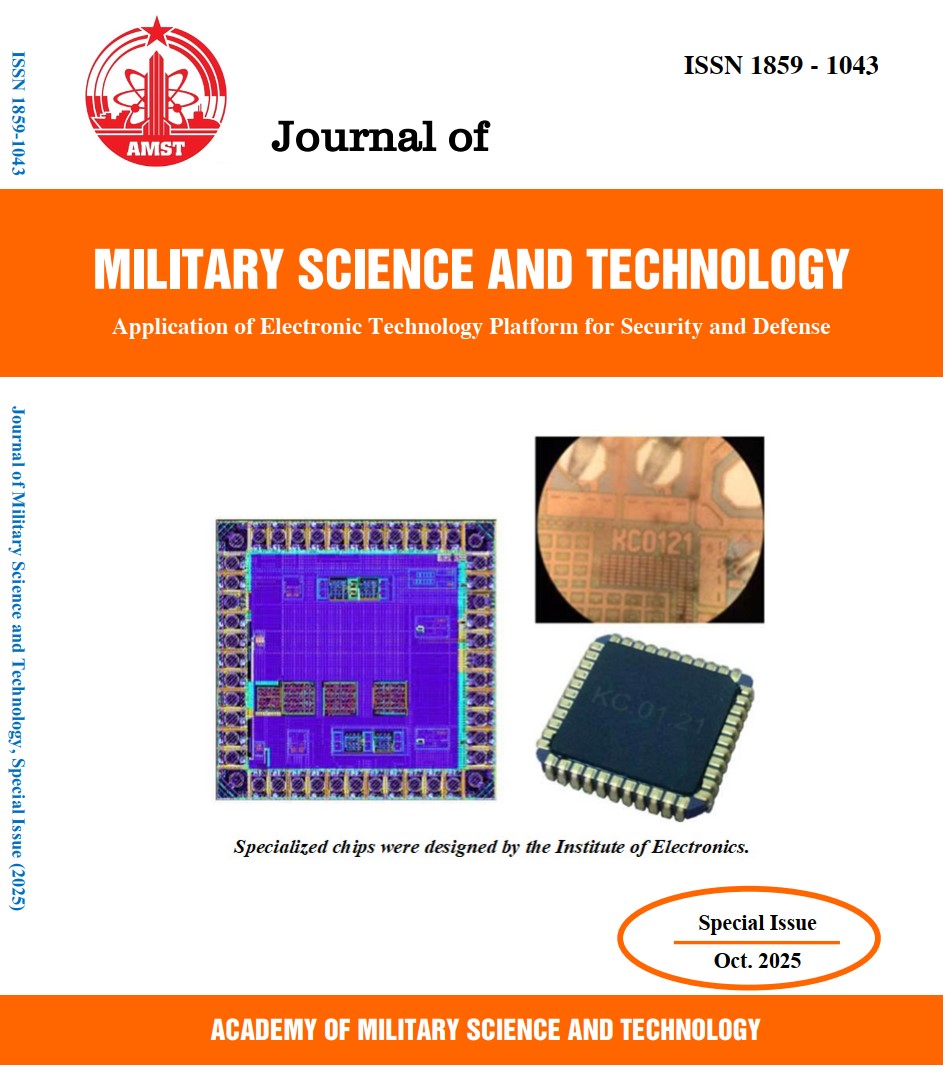A solution for analyzing and evaluating quantum communication networks through simulation
249 viewsDOI:
https://doi.org/10.54939/1859-1043.j.mst.IITE.2025.3-11Keywords:
Quantum communication; BB84; E91; QuNetSim; Simulation.Abstract
This paper proposes a comprehensive solution for analyzing and evaluating the performance of quantum communication networks through the use of the open-source simulation software, QuNetSim. This method provides a flexible and cost-effective approach to studying network protocols and parameters prior to hardware implementation. The main content of the paper focuses on modeling realistic factors such as channel loss, noise, and eavesdropping behaviors. The research conducted detailed simulation scenarios with the BB84 and E91 protocols. In particular, a general network scenario, integrating quantum repeaters and teleportation, was analyzed through Fidelity. The results not only confirm the crucial role of repeaters in maintaining long-distance connectivity but also quantify the performance degradation caused by channel loss and eavesdropping. The simulation results also demonstrate that QuNetSim is a powerful tool, enabling researchers to easily build, test, and optimize complex quantum networks, thereby accelerating the transition from theory to practice.
References
[1]. Quantum Open Source Foundation (QOSF). "Project list", https://qosf.org/project_list/.
[2]. "QuNetSim – Quantum Network Simulator", https://tqsd.github.io/QuNetSim/index.html.
[3]. Dahlberg, Axel, and Stephanie Wehner. "SimulaQron – A simulator for developing quantum internet software", Quantum Science and Technology, 4, 1, 015001, (2018). DOI: https://doi.org/10.1088/2058-9565/aad56e
[4]. Bartlett, Ben. "A distributed simulation framework for quantum networks and channels", arXiv preprint arXiv:1808.07047, (2018).
[5]. Quantum Flagship. "Quantum Repeaters – Quantum Technology", https://qt.eu/quantum-principles/communication/quantum-repeaters.
[6]. Ekert, Artur K. "Quantum cryptography based on Bell’s theorem", Physical Review Letters, 67, 6, 661–663, (1991). DOI: https://doi.org/10.1103/PhysRevLett.67.661
[7]. Nielsen, Michael A., and Isaac L. Chuang. "Quantum Computation and Quantum Information", Cambridge University Press, (2000). DOI: 10.1017/CBO9780511976667. ISBN 978-0521635035. DOI: https://doi.org/10.1017/CBO9780511976667
[8]. Bennett, C. H., and Brassard, G. "Quantum cryptography: Public key distribution and coin tossing", Proceedings of the International Conference on Computers, Systems & Signal Processing, Bangalore, India, Vol. 1, 175–179, (1984).







